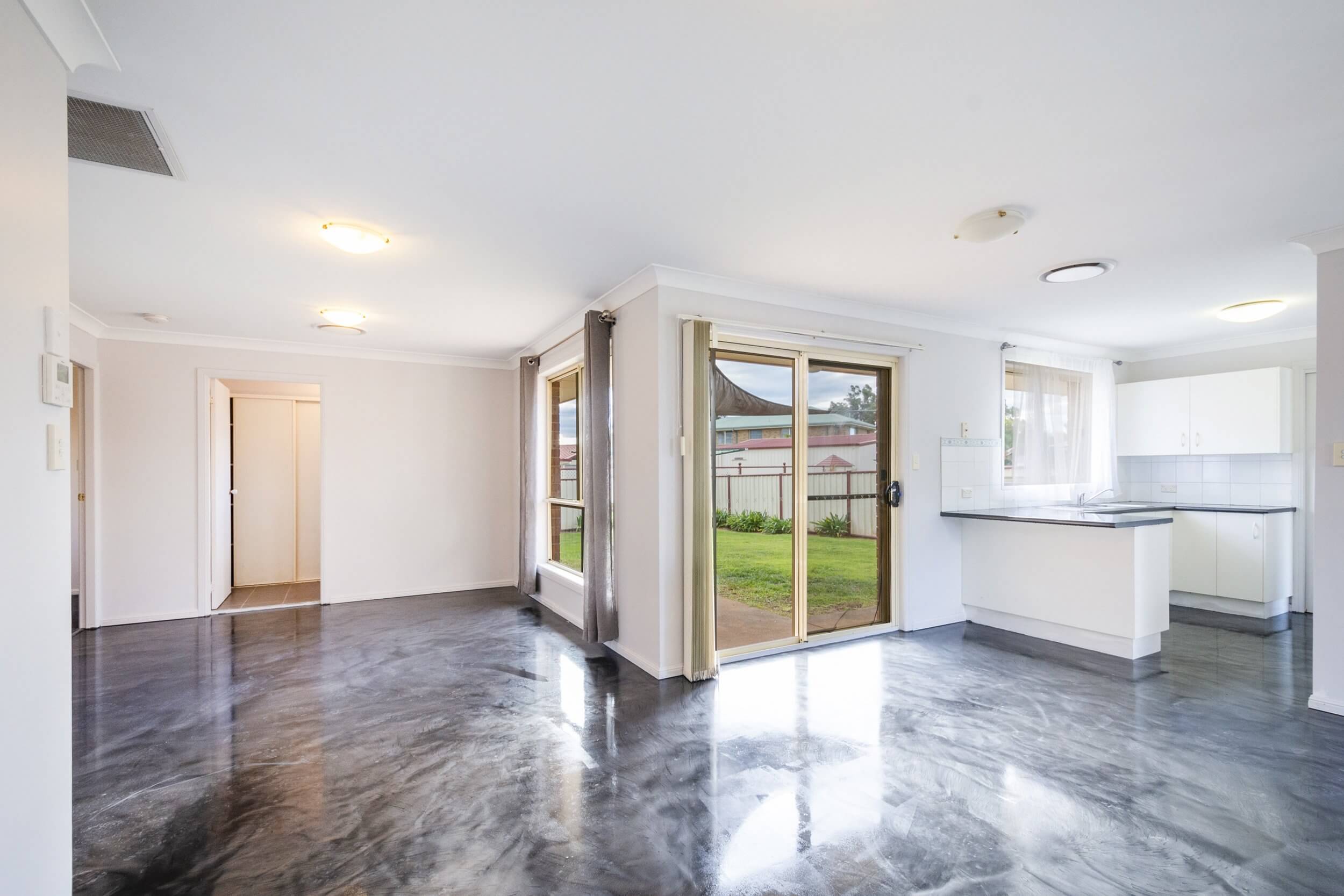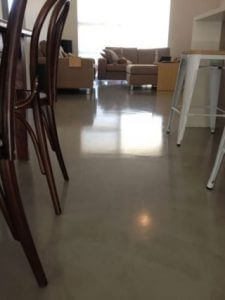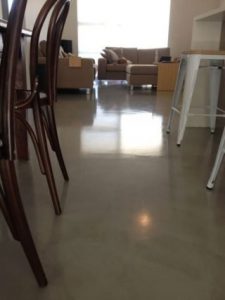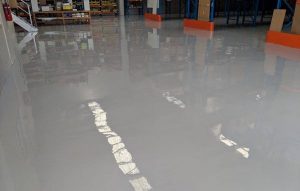Do you hate making a decision without having all the facts? Well, we are here to help! We’ll take a look at polished concrete flooring and traditional flooring for homes and businesses alike. In the end, you can make a more educated decision on which one is better for your unique needs!
What are polished concrete floors?
Polished concrete floors are polished, smooth floors that are made by a process of grinding concrete. The materials used to make them depend on the design and type of floor being made.
Polished concrete may also be called polished terrazzo or decorative imprinted concrete, although it is not always true for all polished concrete products.
Advantages of Having Polished Concrete Flooring
Here are some of the advantages of having polished concrete flooring. Review them thoroughly, and see if they fit your unique needs.
They are durable.
Polished cement is often designed to maintain its appearance over time and resist the effects of aging and wear and tear.
It can also withstand significant weight loads, making it an ideal choice in areas that see heavy traffic like schools or office buildings.
They are perfect for any home.
They can provide a sleek and modern look. Hence, they can fit the style of contemporary homes and traditional homes.
They are versatile.
There are many ways to design your polished concrete flooring. Examples of its different textures are pebble, brick, stone or wood grain. This type of flooring is easily customizable to different colours and patterns.
Easy to maintain
Unlike wood options and other flooring types, polished concrete does not mould easily. Unlike carpet, concrete doesn’t hold odours or stains.
An Affordable Option
Polished concrete flooring is a substantial option for those looking to get their floor done on the budget. It is also an eco-friendly and sustainable choice that will not have any adverse effects on your health or wellbeing. They also do not require expensive materials as hardwood flooring or carpeting do.
Disadvantages of Having Polished Concrete Flooring
Here are some of the disadvantages. See if any of these are deal-breakers, or can be adjusted to.
Polished concrete floors can have cracking.
Polished concrete floors are not as flexible and can crack more easily than traditional flooring. These cracks will need to be filled periodically with a polymer sealant that is made for this purpose. If you don’t want to do any maintenance then polished concrete finish might not be the best choice for your budget or lifestyle.
Not advisable if you have pets.
Pets’ claws can cause scratches to polished concrete flooring. They can also bring in dirt from the outdoors. And they can leak urine on the floor. These spills can cause permanent stains on your floors if not cleaned quickly.
Requires firm foundation.
Does your home or building have a poor foundation? Because concrete is heavy, it requires a firm building foundation that can support its weight. If you don’t have a firm foundation, polished concrete may not be the best for you.
Slippery when wet
One disadvantage with polished concrete is that it can become slippery when wet, which could lead to falls and injuries.
Polished concrete floors can be loud.
Another downside is its inability to absorb sound like carpeting or hardwood flooring does, so those who want quiet surroundings might choose a different type of material. Floors made from polished concrete reflects back noise, so it’s not advisable if you have a large space.
What is Traditional Flooring?
Traditional flooring is the prefered option for many people because it often comes with a wide variety of designs, colours and textures.
Traditional flooring can be made from all sorts of materials, including wood, ceramic tile, carpet and vinyl.
Advantages of Traditional Flooring
Now, let’s explore the different advantages of traditional flooring. Different advantages will largely depend on the type of flooring because there’s wood, carpet and so much more. However, we’ll try to explore a more general idea of their advantages and disadvantages.
Environmentally friendly options
Using floor types like wood can help to reduce the amount of manufacturing carbon dioxide emissions. Meanwhile, ceramic tiles are made of clay that is naturally found on the earth.
Many options available
It’s not just wood and ceramic tile either, there are many different options to choose from such as carpet or vinyl. Which one you should pick will depend on your preference but that doesn’t mean it has to be an expensive decision.
Cost-effective to repair
Concrete is harder to work with. Repairing it would require special equipment. Hence, repairing traditional flooring requires less money compared to concrete floors.
Disadvantages of Traditional Flooring
Maintenance
Wood can encourage moulds when there’s a lot of moisture in your home. Carpets can also accumulate dust and odour from spills. Traditional flooring is relatively harder to maintain compared to polished concrete.
Cost
Compared to polished concrete floors, natural stone tiles are expensive. Meanwhile, carpets and wood may not be as resistant to stains, rip, tear over time. Hence, maintenance costs can be an issue. Concrete floors can last 100+ years while other options like carpet can last for only up to 25 years.
Unhealthy
Traditional flooring like vinyl, carpet, asphalt and linoleum is made with petroleum products that account for nearly a third of all plastics produced in North America each year. These petrochemical-based materials have been linked to health problems such as cancer, asthma and allergies.
What is Polished Concrete?
Using stunning aggregates, quartz and colours to create a sense of industrial sophistication in both homes and commercial buildings, polished concrete is a versatile material that is easily customizable in its appearance. Its reflective surface creates an evocative quality under light, which can be suitable for a variety of programs.
From the least expensive “grind and seal” method to honed concrete which uses a penetrating sealer to create a reflective surface, polished concrete can be created in a variety of ways. As it is long-lasting and more durable under heavy foot traffic, mechanically polished concrete is the type usually used in commercial projects. It is created by applying a chemical hardener that densifies the porous concrete, and then grinding it to the desired gloss and smoothness.
The concrete can be ground to 800, 1500 or 3000 grit level using a series of progressively fine tools (similar to the process of sanding wood). Another consideration is the concrete’s “exposure level”- that is, the amount if the original surface which is ground away and thus how much of the aggregate material is exposed.
WHAT IS POLISHED CONCRETE FINISH?
Their uniqueness is one of the finest attributes of a polished concrete finish. No two polished concrete floors will ever be the same. Concrete is a natural product made up of sand, stone (aggregate) and cement and every concrete mix is different.
Polished concrete is very different from your basic raw concrete. Polishing concrete involves taking off the top layers to reveal the sand and/or aggregate underneath. It can transform an unimpressive industrial floor to give a stunning, contemporary look but this is a very time-consuming and skilled process.
There are four basic polished concrete finishes:
1. Bronze
The bronze finish is the best fit for you if you want a very industrial looking floor, showing all the variations in colour and texture. It is achieved by simply grinding off the surface paste of your concrete floor, exposing no aggregate, just a sandy and often uneven finish. It will still be more susceptible to staining even if it is still smooth to touch and hardeners are applied. The bronze concrete floor can be brought up to a matte or high gloss finish and is more suited, in our opinion, to an industrial or commercial setting.
2. Silver
You may wish to reveal the variations in your sand, gravel and aggregate underneath your sandy layer. This is achieved by an initial deep grind into the concrete, using large metallic disks. The first grind is the deepest, and it is at this stage you can decide how much sand, gravel and aggregate you want to expose. The silver finish gives you thecharacteristics of a well-ground floor with a matte finish. After the first grind, progressively smaller diamond disks are used to remove the scratches made by the previous grind… and so on. The silver finish is left with a matte or satin look.
3. Gold
You should consider the gold finish if you like the smooth stone free-polished concrete look. The gold finish gives you a highly reflective surface.
If you don’t want to expose the aggregate, the first deep grind is avoided when grinding. This method involves grinding away the concrete skin and exposing the underlying, stronger concrete, in the form of fine material. Normally, 1 mm of the surface is ground away. Before the grinding can commence, it is imperative for this finish that your concrete has been power floated and is completely smooth. There is no room for error or variations in levels as you are only taking 1 mm off your surface.
4. Platinum
The platinum finish is generally considered to be the ‘Rolls Royce’ of polished concrete floors. The platinum concept gives the floor the best characteristics and is the one recommended in most situations. It needs to bring the floor up to 3000 grit as it involves more grinding steps than the other options. The result is an unbeatably durable floor, with a highly reflective finish. The more you polish the more pores you close.
WHERE IS POLISHED CONCRETE COMMONLY USED?
The most common places polished concrete is used include:
· Large warehouses and warehouse outlets
· Retail stores
· Hotels and restaurants
· Office buildings
· Auto showrooms
· Private residences
BENEFITS OF POLISHED CONCRETE
AFFORDABLE
Despite having a high-end appearance, it is still more affordable than any other flooring options. The whole lifecycle cost is lower than any popular types of flooring. It is particularly affordable if you already have a concrete slab you can get professionally.
DURABLE
Durability is second to none for manufacturing and warehousing facilities. It is very solid and can stand up to heavy foot traffic.
LOW-MAINTENANCE
They are very easy to maintain and they don’t require you to periodically strip the surface and apply wax or other coatings like many other flooring types do. Moreover, they are even very easy to clean since don’t hold onto dirt or dust like other floors do and only require occasional mopping.
ENVIRONMENTALLY FRIENDLY
They are an eco-friendly option as it does not involve the use of hazardous chemical coatings, cleaners and adhesive in their installation or upkeep. Floors are also energy efficient, which further add to their reputation as a “green” flooring choice.
These are only the few benefits of polished concrete flooring and with many benefits it is not hard to see why it is gaining popularity especially in Sydney. Polished concrete floors Sydney is becoming the most wanted option for flooring. Polished concrete contractors Sydney are getting more and more jobs.
Have you chosen polished concrete floors Sydney located?
If you live in Sydney and have decided you want the polished concrete finish, then we can help. We’re the trusted polished concrete contractors Sydney located. We’re also polished concrete floor suppliers. So send us a message for all your concrete flooring needs.
Get a quote for our concrete flooring services by filling out the form below:




